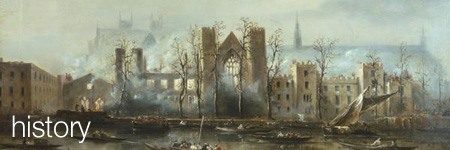
Charing Cross
Strand (SW1) Derived from charrynge, a "turning" or "bend." In the reign of Queen Elizabeth I this was a country road, bounded by a wall on the south towards the park, and on the north by a row of trees, all beyond it for miles being enclosed fields. It remained nearly in the same state until the time of Charles II. Charing Cross was for many centuries a place of punishment, and its pillory was among the most famous of the many that formerly stood in London. Among many notorious persons who underwent that degradation in this place was Titus Oates, for his well-known perjuries. Here, in the reign of Charles II, were executed Hugh Peters, chaplain of Oliver Cromwell, Scrope, Jones, Harrison, and many others of the regicides. Home Tooke derives the word "Charing" from the Saxon word charan, "to turn and the situation of the original village on the bend or turning of the Thames gives probability to this etymology. It took the additional name of Cross from the wooden cross set up by Edward I as a testimony of his affection for his beloved Queen Eleanor. Wherever her corpse rested on its transit from Grantham in Lincolnshire to Westminster Abbey, the King erected a cross in commemoration of her. (Reference: Smith's Streets of London, pp. 82, 84, 85)